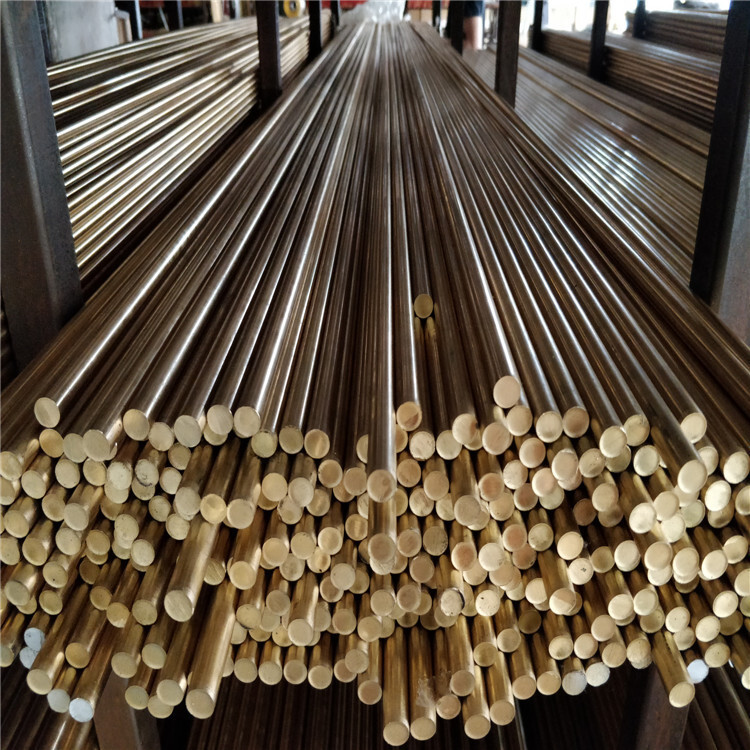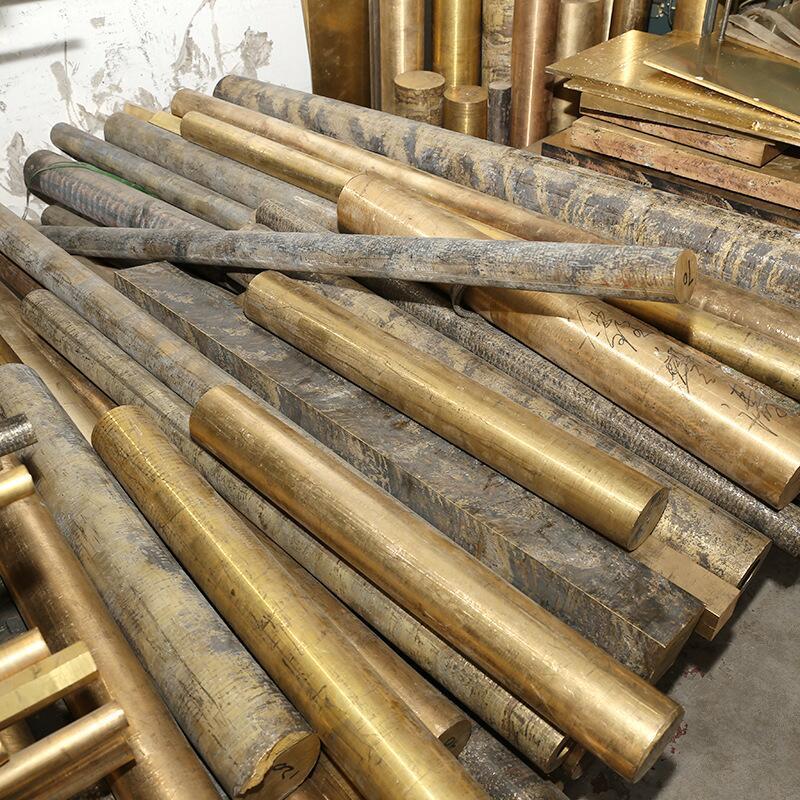CuAl9Ni3Fe2 is a typical aluminum bronze alloy known for its excellent overall performance and widespread use in industrial applications.

1. Composition and Alloy Design
(1)Nominal composition (by mass percentage):
Cu (Copper): ~86% (base metal)
Al (Aluminum): 9% → Core strengthening element
Ni (Nickel): 3% → Enhances corrosion resistance and high-temperature performance
Fe (Iron): 2% → Refines grain structure, improves strength and wear resistance
Trace elements: May contain small amounts of Mn, Si, etc. (to improve fluidity or deoxidize)
(2)Alloy Design Principles:
Aluminum's role:
Solid solution strengthening: Al dissolves in Cu to form the α solid solution, enhancing strength.
Oxide film formation: The Al₂O₃ surface layer provides excellent corrosion resistance, especially in seawater and acidic environments.
Promotes β phase formation: High Al content may form hard β phase (Cu₃Al), but excess Al can cause brittleness.
Nickel's role:
Inhibits de-aluminum corrosion (Dezincification-like corrosion).
Enhances high-temperature oxidation resistance and stabilizes microstructure.
Iron's role:
Forms intermetallic compounds like Fe₃Al, refines grain structure, and enhances wear resistance.
Works with Ni to improve fatigue resistance.
2. Microstructure and Phase Composition
(1)Main phase components:
α solid solution (FCC): Cu-Al solid solution, provides toughness and plasticity.
β phase (BCC): Cu₃Al, stable at high temperatures, increases strength but reduces plasticity.
κ phase (intermetallic compound): Fe₃Al, NiAl, disperses and strengthens the matrix, improving wear resistance.
(2)Microstructure Characteristics:
Cast state: Dendritic structure, may contain small pores or segregation.
After heat treatment: Uniform distribution of α + κ phases, grain refinement (Fe and Ni addition suppresses grain growth).
3. Key Properties
(1)Mechanical Properties (typical values):
Ultimate Tensile Strength (UTS):550–750 MPa
Yield Strength (YS):250–450 MPa
Elongation (Elongation):10–25%
Hardness (HB) :160–220
Fatigue Strength:High (better than most copper alloys)
(2)Corrosion Resistance:
Seawater environment: Excellent resistance to pitting, crevice corrosion, and stress corrosion cracking (better than 316L stainless steel).
Acidic environment: Good resistance to dilute sulfuric acid and hydrochloric acid, but should be used cautiously in concentrated acids.
High-temperature oxidation: Stable below 400°C (synergistic protection from Ni and Al).
(3)Other Characteristics:
Wear resistance: Low friction coefficient, suitable for high-load sliding contact parts.
Thermal/electrical conductivity: Lower than pure copper but better than steel (thermal conductivity ~ 50 W/m·K).
Non-magnetic: Suitable for electromagnetic-sensitive environments (e.g., equipment near ship compasses).
4. Processing and Heat Treatment
(1)Forming Processes:
Casting: Sand casting, centrifugal casting (complex parts like ship propellers).
Forging/Rolling: Preheat to 700–850°C (good hot-working properties, difficult cold-working).
(2)Welding:
TIG and MIG welding can be used, preheating (200–300°C) is necessary to prevent cracking.
Recommended welding materials: Cu-Al-Ni series welding wire.
(3)Heat Treatment:
Annealing: 600–700°C, followed by slow cooling to eliminate stress and achieve uniform structure.
Quenching + aging: In some cases, for further strengthening (e.g., 950°C water quenching + 450°C aging).
5.Typical Application Areas
(1)Shipbuilding & Marine Engineering:Propellers, seawater pumps, rudder bearings.
Seawater corrosion resistance + high strength against cavitation.
(2)Chemical Equipment:Reactor agitators, valves, heat exchanger tubes.
Acid/alkali corrosion resistance + thermal conductivity.
(3)Aerospace:Landing gear bearings, gear box components.
Wear resistance + fatigue resistance.
(4)Energy Industry:Hydroelectric turbine blades, nuclear cooling system parts.
Erosion-corrosion resistance + radiation resistance.
(5)Heavy Machinery:Mining machinery liners, rolling mill bearings.
High-load wear resistance + impact resistance.
6. International Standards and Corresponding Grades
Europe: EN 1982:2008 → AB2 (corresponding to CuAl9Ni3Fe2).
United States: ASTM B148 → C95800 (similar composition, slightly lower Ni content).
China: GB/T 1176-2013 → ZCuAl9Ni3Fe2 (casting aluminum bronze).
7. Limitations and Improvement Directions
(1)Drawbacks:
High density (≈7.8 g/cm³), not suitable for lightweight applications.
Moderate machinability (requires specialized tools, such as carbide or coated tools).
(2)Improvement Directions:
Adding rare-earth elements (such as Ce, La) for further grain refinement.
Developing powder metallurgy processes to improve material homogeneity.

8. Conclusion
CuAl9Ni3Fe2, with its high strength, corrosion resistance, and wear resistance—referred to as the "three high" properties—has become the preferred material in harsh environments such as marine, chemical, and energy industries. Despite its higher cost compared to ordinary copper alloys, its long lifespan and low maintenance requirements make it advantageous in terms of lifecycle costs. As surface treatment technologies (e.g., laser cladding) continue to develop, its application potential will further expand.
9. About Suzhou Bolaibao
As a technology-oriented enterprise specializing in copper alloy research and supply, Suzhou Bolaibao Metal is dedicated to providing high-performance CuAl9Ni3Fe2 aluminum bronze and other high-end copper alloy solutions to global customers. With advanced production processes, extensive material processing experience, and a strict quality control system, our products have been widely used in marine engineering, energy equipment, aerospace, and other critical fields. Moving forward, we will continue to focus on the research and development of high-end copper alloys and promote green manufacturing to provide high-quality products and services to global customers.
Company website:http://blbmetal.com
Contact phone: +86 15370330359
Contact email: sale@bolaibao1.com
Get real-time quotes
Interested? Leave your contact details.
